
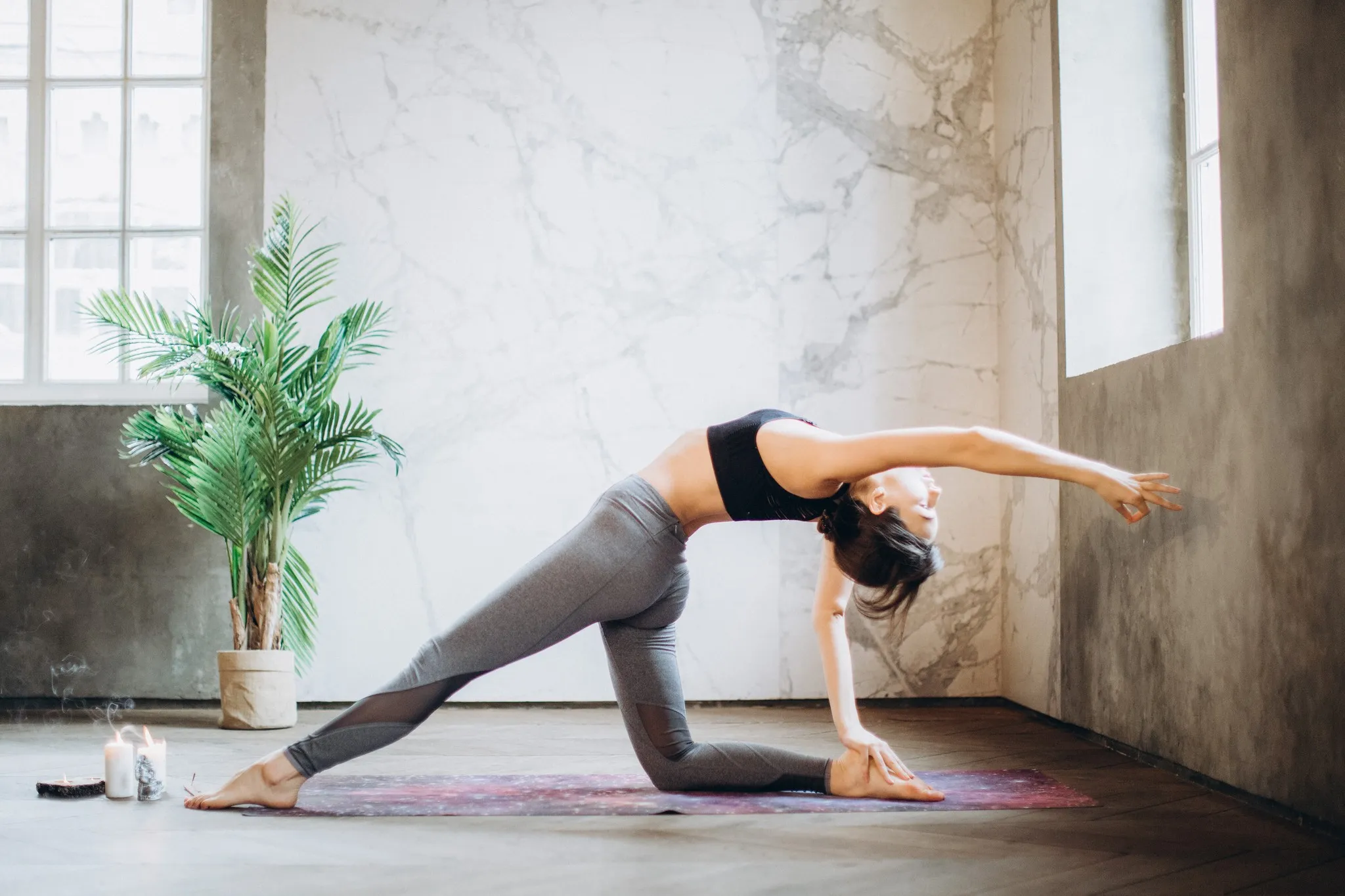
Maybe you’ve seen it offered at your local yoga studio or online, but you haven’t tried it because you’re not quite sure what it is. Shakti yoga, or Shakti yoga flow, is a dynamic, energizing form of yoga that isn’t as commonly known as other types of yoga — like Kundalini, Vinyasa, Flow, or Power yoga.
It can be intimidating to learn a new kind of yoga you’re unfamiliar with, but if you’ve never given Shakti yoga a try, we recommend giving it a chance. Shakti yoga not only increases your energy levels, but it also improves your awareness, focus, and awakens your inner god or goddess. We’ve put together a beginner’s guide to help you know what to expect from your first class, and the benefits that come from this powerful practice.
The root of Shakti yoga lies in Hinduism, where Shakti is revered as a female goddess that embodies divine feminine power, known as The Great Divine Mother. We can think of Shakti as a goddess, but to gain a deeper understanding of the power of Shakti, it’s helpful to consider her as an essence that lives inside all of us — regardless of our gender identity.
Shakti is formless and yet can take on any form — different goddesses, energies and personalities — and she can activate other Hindu gods. Think of Shakti as a limitless, boundless energy that can be called upon through mantras, chants, breath work, meditations, and yogic movement. Her energy lives coiled at the base of your spine, and you can gain access to it through Shakti yoga flow.
Participating in Shakti yoga can awaken this energy and move it up your spine, channeling it through your chakras. Like a Vinyasa class, Shakti yoga utilizes dynamic, flowing movement in a yogic dance that facilitates the build-up of your Shakti energy and releases it throughout your chakras and your body.
While Shakti yoga classes may vary depending on your instructor and the structure of the class, generally you can expect flowing movement that is rooted in spirituality and connected to your breath. Shakti yoga also commonly utilizes specific chants designed to encourage the movement of this powerful energy flow.
So, how does the channeling and release of Shakti energy benefit you as the practitioner? There are many ways in which Shakti yoga can bring a welcome dose of feminine vitality to your daily life.
On a spiritual level, when you take a Shakti yoga class, you can expect to come away with an increased felt sense of vibrancy in your being. Your consciousness will be enlivened and you’ll feel a greater connection with your body, your spirit, and all living things.
Shakti yoga also increases your energy reserves. If you’ve been feeling tired, depressed, and like your internal battery is running low, a Shakti yoga session can animate you physically, emotionally, and mentally. It can improve your circulation, recharge your nervous system, build strength and flexibility, and increase your sense of self-awareness.
Since the goal of Shakti yoga is to awaken this powerful energy, you may come away feeling like the goddess herself, as you’ve taken on her all-encompassing and healing spirit within your own body. If this sounds amazing, that’s because it is — Shakti energy can make you feel as if you are buzzing with vitality and like you’re glowing with endless light.
[inline-CTA-1]
A typical Shakti yoga session utilizes the same kinds of Hatha yoga poses you’d find in a Vinyasa or Power yoga class. Since this type of yoga is meant to invigorate your body and soul, expect standing and strength building poses that may be somewhat challenging. Asanas like Warrior I, II and III, Dancer’s pose, Sun Salutations, Plank, Downward-Facing Dog and Upward Facing Dog are a few common poses in most Shakti yoga classes.
Each pose will be linked together with dynamic movement in conjunction with your breath. While performing Shakti yoga, continuous chanting — or mantras — harnesses your kundalini energy and channels it up your spine and through your chakras. If you already have experience practicing Hatha yoga, the poses will feel familiar to you, and if you’ve been to a Vinyasa or Flow yoga class, the Shakti movement will provide a similar experience. Don’t worry if you stumble a bit with some of the chants — as you repeat them throughout the class, you’ll become accustomed to the Sanskrit words, even if they feel a little foreign at first.
You don’t have to wait for the next Shakti class to show up on your yoga studio’s schedule. You can start practicing this divine form of yoga at home by performing the poses below in a flowing manner.

Start by standing at the top of your mat in Mountain pose with your hands in prayer position. Inhale deeply and sweep your arms above your head into Upward Salute. Exhale and fold forward into Standing Forward Bend. Inhale and lengthen your spine as you shift into Extended Forward Fold. Exhale, bend your knees, step backward with your right leg to perform a lunge.
Inhale, plant your palms on the mat, and step your left leg back to join your right leg in High Plank pose. Exhale and sink into Low Plank, or Chaturanga Dandansana. You can modify this to Four-Limbed Staff pose if needed. Inhale and dynamically flow into Upward Facing Dog. On your next exhale, lift your hips into Downward Facing Dog.
Inhale and step your right foot forward to perform a lunge on the opposite side. As you exhale, step forward into Standing Forward Fold. Return to Mountain pose by inhaling and rolling yourself upward to standing position, one vertebrae at a time. Press your palms together in prayer position to finish the sequence. Repeat at least 2 more times.
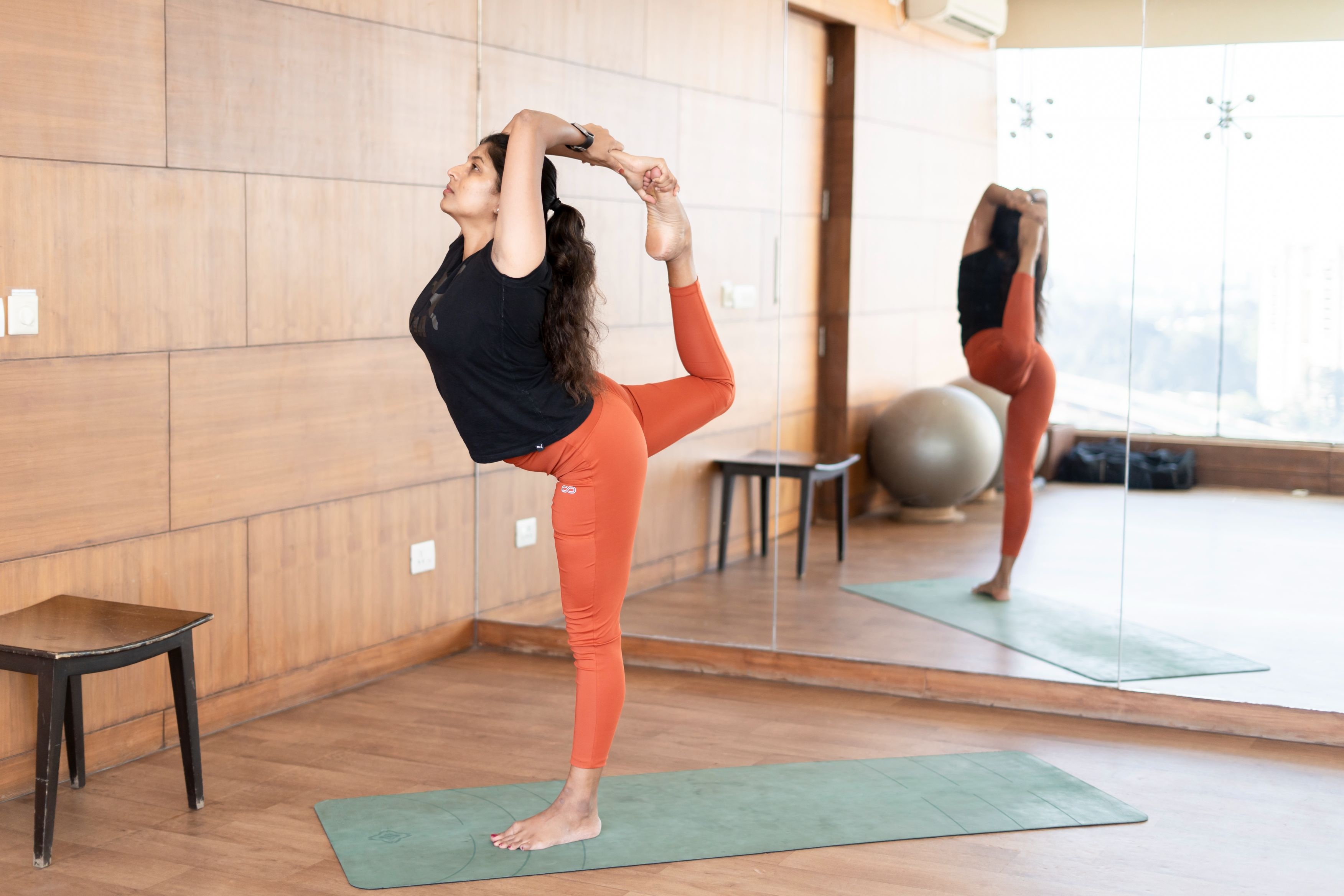
Stand in the middle of your mat with your weight evenly balanced on both feet. Shift your weight onto your left foot, while bending your right knee and grabbing your right foot with your right hand. Lift your left arm up toward the ceiling. Bend at your waist and slowly lean forward, lifting your right leg and engaging your core. For better balance, keep your gaze on a fixed point in front of you. Hold for 3-5 breaths, then repeat on the other side.
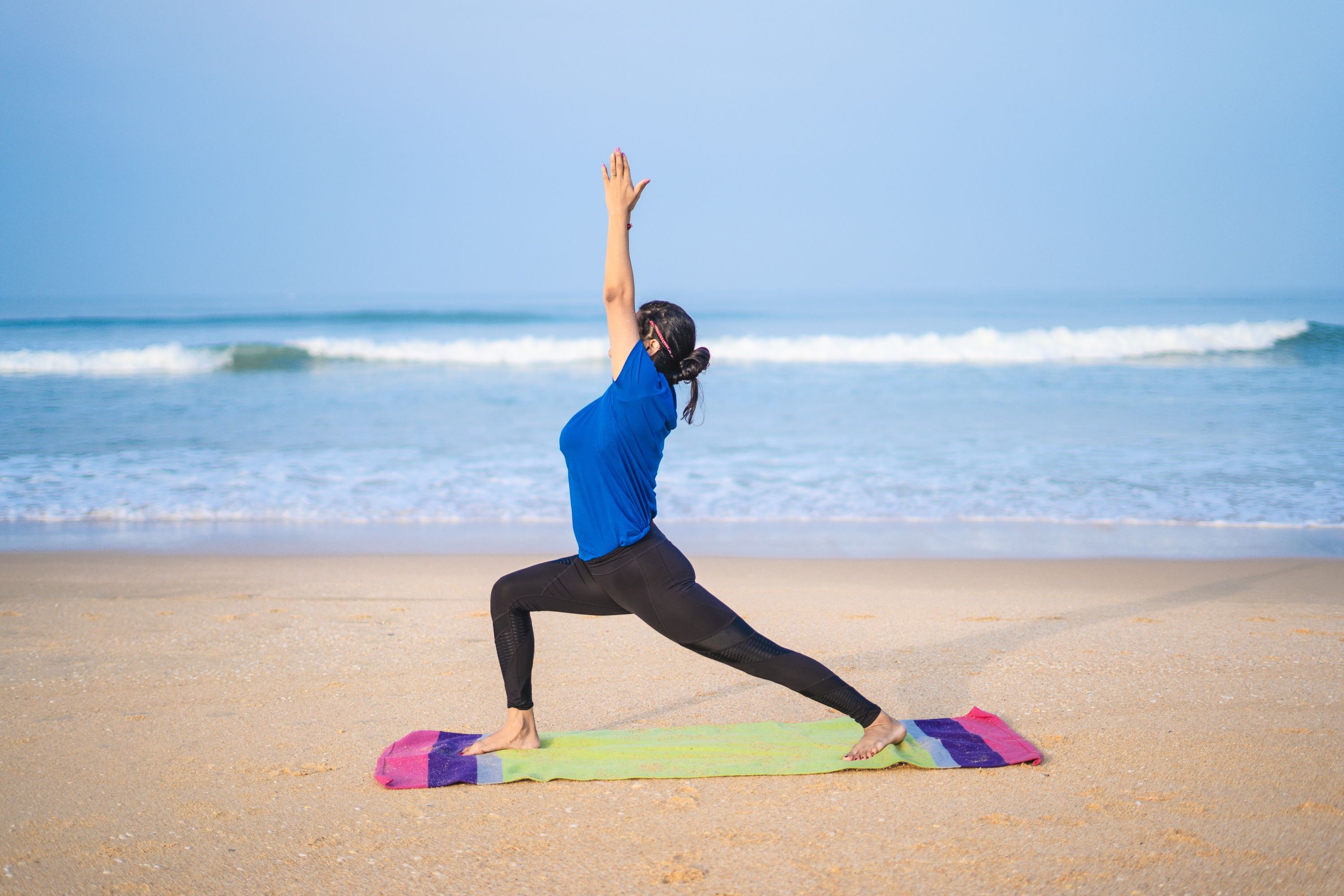
Start in Downward Facing Dog and step your right foot forward. Keep your toes angled toward the front of the mat, and your front leg knee bent at 90 degrees, while strongly engaging your back leg. Your back foot should be slightly angled. Inhale and bring your arms to either prayer position, or in an Upward Salute position above your head. Extend the front side of your body allowing your back to softly bend. Stay here for five to ten breaths.
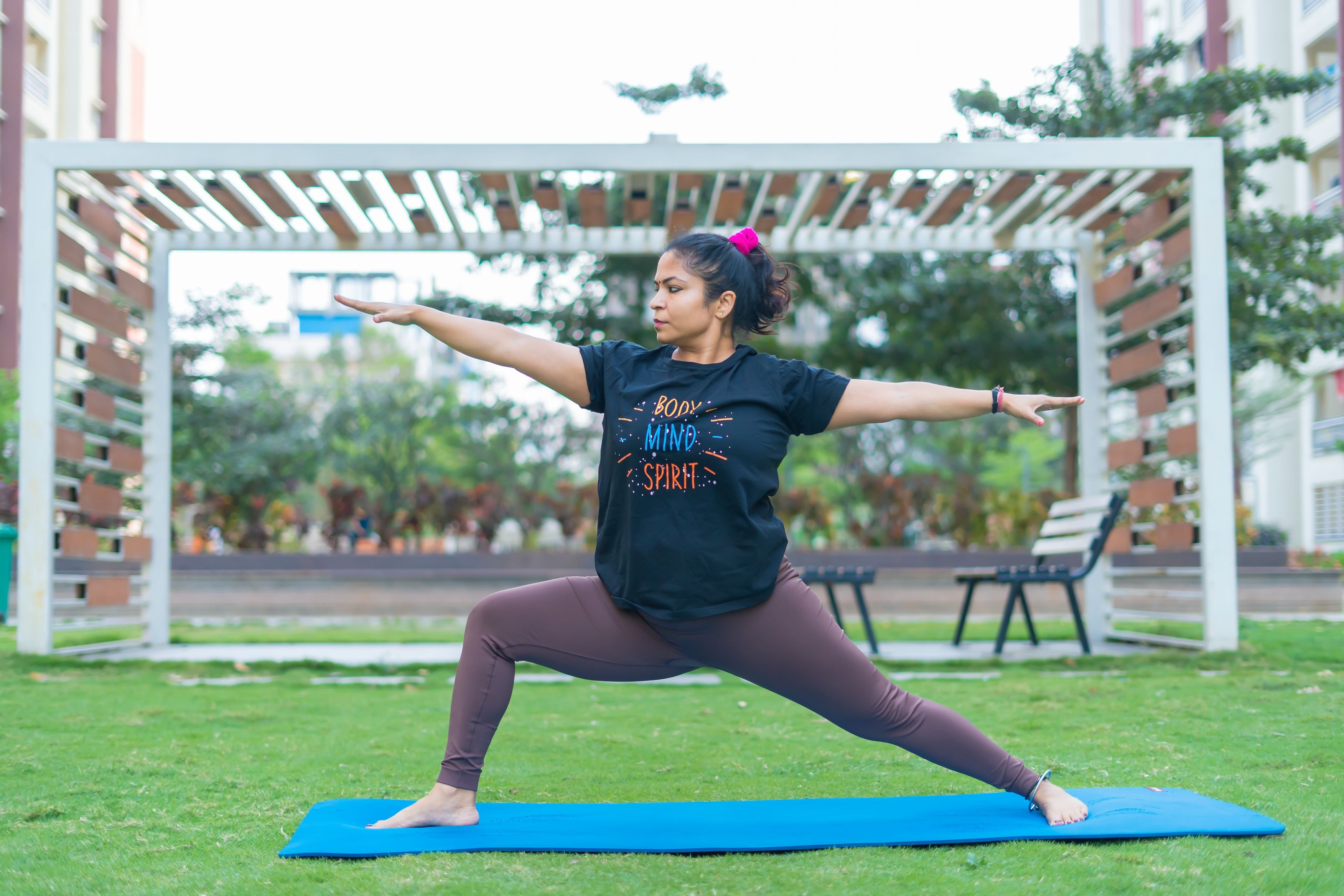
Step your right foot forward on the mat with your toes pointed forward and your right knee bent. You left foot will stay behind you, parallel to the mat. Keep your hips squared and arms stretched over your front and rear legs, distributing your weight evenly between both legs. Stay in this pose for 5-6 breaths.
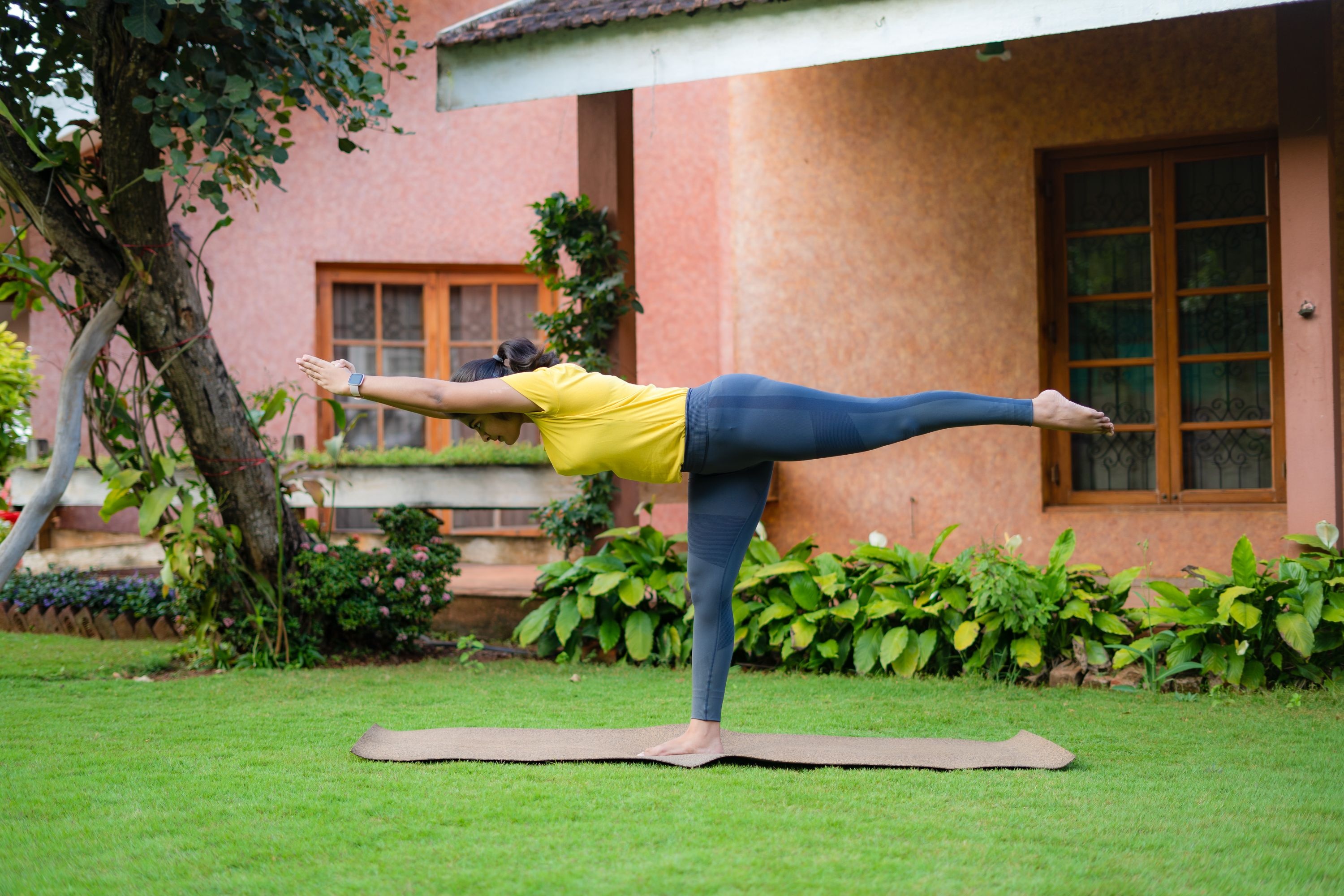
Start in Mountain pose, with your feet hip distance apart. Step your left foot back, turned at a 45 degree angle, and bend your right knee, keeping your right foot pointing forward at a 90 degree angle. Your torso and pelvis should be squared with the front of your mat. Shift your weight to your right (front) foot, lifting your left (back) leg off the ground, extending it straight back behind you, and straightening your right leg.
Keep your standing knee slightly bent and avoid locking it. Extend your arms forward above your head, so that your entire body is positioned in a straight line, parallel to the floor. Engage your core, extend your body from your fingertips to the toes of your lifted foot, and focus your gaze on the floor in front of you. Hold for a few breaths and repeat on the other side.
To deepen your Shakti yoga practice, try incorporating mantras with your routine. Even if you don’t know the meaning of every word, the sounds and syllables are designed to awaken your Shakti energy. Repeat as often as you can during your practice.
Adi shakti, adi shakti, adi shakti, namo namo
Sarab Shakti, Sarab Shakti, Sarab Shakti, namo namo
Pritham bhagvati, pritham bhagvati, pritham bhagvati, namo namo
Kundalini mata Shakti, mata Shakti, namo namo
Translation:
I bow to the primal power
I bow to the all-encompassing power
I bow to the creative power at the beginning
I bow to the divine mother of all peace
Ya devi sarva bhuteshu
Shakti rupena samsthita
Namastasyai namastasyai namastasyai namo namaha
Ya devi sarva bhuteshu
Chetanetyabhidhiyate
Namastasyai namastasyai namastasyai namo namaha
Translation:
Oh Goddess, who lives within everything in the form of power,
Salutations to you, salutations to you, salutations to you
Oh Goddess, whom we name with the word awareness,
Salutations to you, salutations to you.

Receive personalized guidance tailored to your unique fitness goals, live with a dedicated coach—no credit card required.